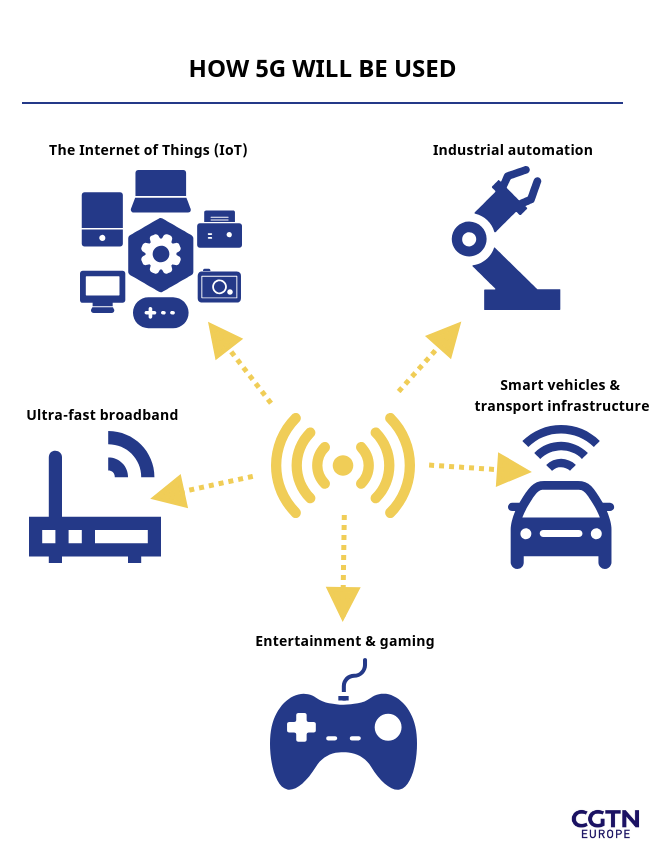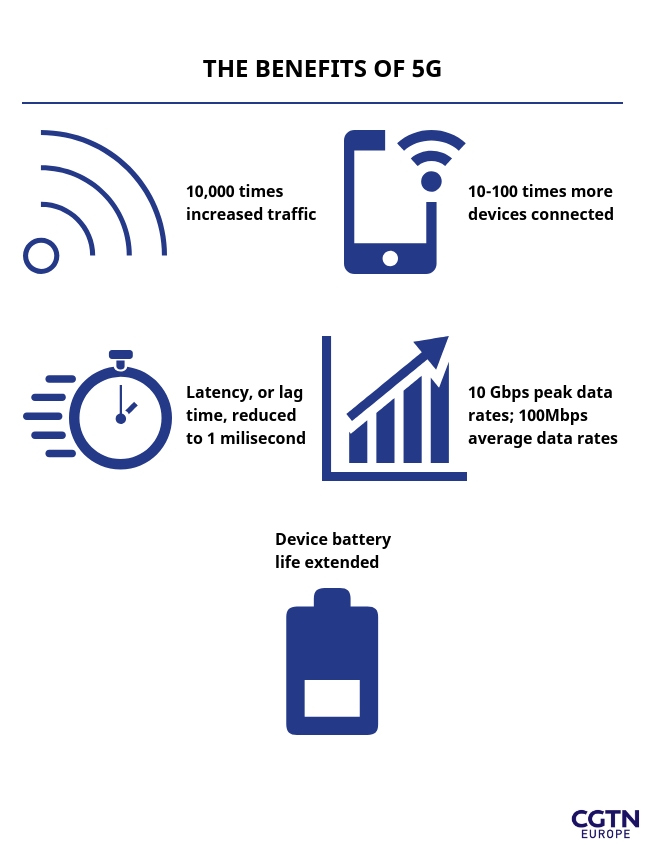After being in the works for nearly a decade and subjected to intense political scrutiny, media attention and public interest, 5G is finally being rolled out across Europe.
Touted as one of the biggest leaps in wireless communication, the budding mobile network not only boasts reliable connections and dazzling speeds but also promises to be the harbinger of next-generation innovations.
A fusion of cutting-edge network technologies and rigorous research, 5G is expected to pave the way towards a smarter and more connected world in which billions of machines communicate with each other. Unleashing the full potential of the Internet of Things (IoT) it would help set up smart cities, facilitate industrial automation, cloud computing, remote medical surgery and even guide self-driving vehicles.
Steve Mollenkopf, CEO of telecoms company Qualcomm, says: "5G will have an impact similar to the introduction of electricity or the car, affecting entire economies and benefiting entire societies."
Despite the accolades, there is still a lack of clarity about what 5G is and how it could have an impact on our lives.

The basics of 5G
Every few years or so, the mobile industry and global standards agencies set out plans for a more advanced form of cellular service. The fifth generation of wireless broadband, or 5G, is their latest offering. It builds upon the existing 4G LTE connection and comes with three major upgrades:
1. Faster speeds – 5G will transfer data 20 times faster than its predecessor, while offering a minimum peak download speed of 10 gigabits per second (Gbps) compared with 4G's 1 Gbps. The International Telecommunication Union (ITU), an agency of the United Nations, expects the network to provide download speeds of at least 100 megabits per second (Mbps) to approximately one million devices per square kilometer by 2020.
2. Low latency – Often unnoticed, there is a brief delay when information is sent between devices. With 5G, the so-called latency will come down to almost zero. Currently, on 4G it takes around 20 milliseconds. According to the ITU, 5G should take no longer than one millisecond.
3. Greater bandwidth – More devices would be connected at the same time than ever before. Whether in a stadium or dense urban areas, network congestion would be a thing of the past, thanks to the increased capacity.

Unlike LTE, 5G will take advantage of all three spectrums – low, mid and high. Spectrums are radio waves that transmit cellular data and with 5G, each band plays a crucial role. While low-band spectrum lays the foundations to enable coverage, the mid band boosts the former and strengthens network capacities. The high band further amplifies the two by using compact radio waves, otherwise known as mmWave technology.
This new shortwave frequency, however, suffers from one fundamental flaw – it can only cover a few meters as opposed to current frequencies, which can travel for miles. To mitigate the drawback, an entirely new wireless architecture called "small cells" has been created.
Moving away from the practice of having traditional mobile towers spread over long distances, small cells would be clustered closely to create data highways that could transmit vast quantities of information at much higher speeds.
A costly proposition
Network operators are now bracing for the challenge that comes with the introduction of any new technology: cost. Setting up a radically different infrastructure does not come cheap. Greensill, a company that provides working capital to industry, predicts the global roll-out of 5G will top $2.7 trillion by the end of 2020.
Tony Wonfor, managing director of Greensill, believes the figure will keep rising, given the growth prospects. "Spending on 5G roll-out is just the thin end of the wedge," he says. "This project is actually about funding the growth of the internet of things and industrial connection to that."
Mobile companies are also putting aside huge sums of money to bid for the higher-frequency spectrum. In Italy, for instance, the government raised a jaw-dropping $7.5 billion by auctioning the country's 5G airwaves in fall 2018.
The return on investment for the telecoms industry, however, is staggering. In a 2018 research note, Morgan Stanley said the 5G network could generate incremental annual revenue of $156 billion from just seven market sectors over the next decade – 40 percent of the present mobile service revenue.
A similar prediction came from the trade body GSMA, which estimates the number of IoT devices to triple to 25 billion by 2025, triggering a quadruple spike in revenues to the tune of $1.1 trillion.
Security risks of 5G
Apart from the eyewatering infrastructure costs, 5G has also triggered serious privacy and national security concerns. As service providers and governments spar over network integrity and compliance issues, experts have warned about the risk of user data falling into the wrong hands.
Nick Saviddes, chief technology officer at internet security company Symantec, says: "Over time, more 5G IoT devices will connect directly to the 5G network rather than via a Wi-Fi router. This trend will make those devices more vulnerable to direct attack.
"For home users, it will also make it more difficult to monitor all IoT devices since they bypass a central router. More broadly, the ability to back-up or transmit massive volumes of data easily to cloud-based storage will give attackers rich new targets to breach."